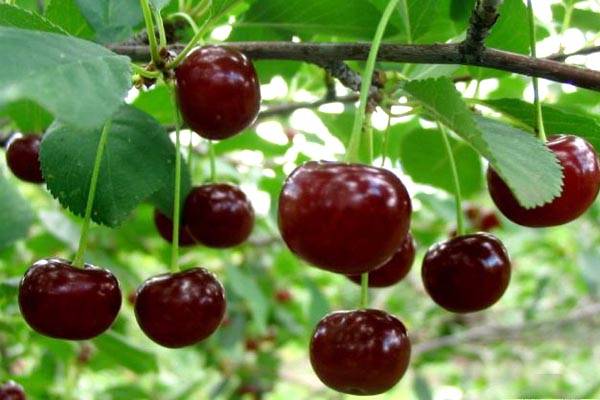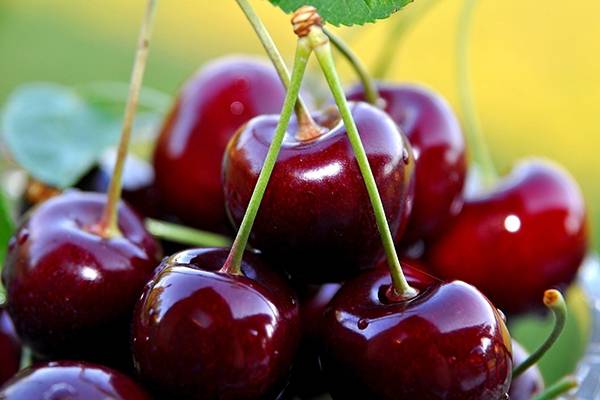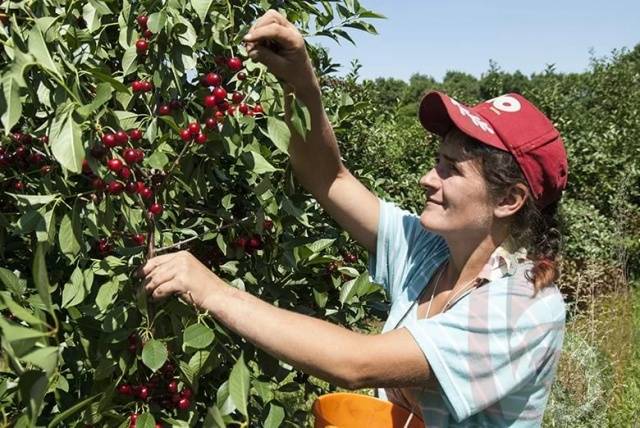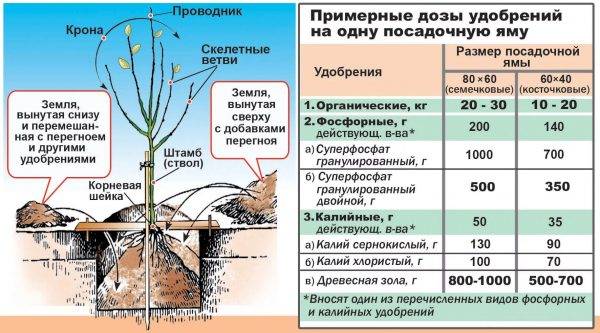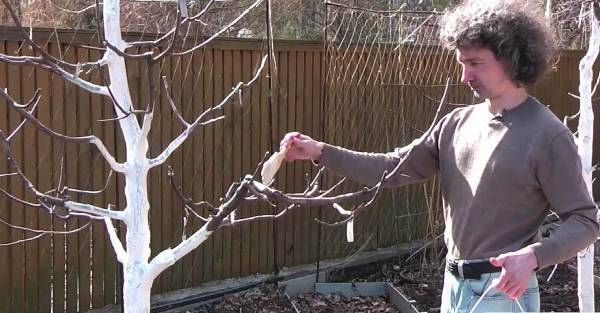Content
Cherry varieties Vocation combines compact growth with high yields. It is unpretentious in care, frost-hardy, and its berries are very tasty. From the article you can find out why cherries with such attractive characteristics are not particularly popular among summer residents and gardeners.
Breeding history
Cherry variety Vocation was received within the walls of the Ukrainian Research Institute of Irrigated Horticulture, which is located in the city of Melitopol, Zaporozhye region. The author of the variety is the famous breeder N.I. Turovtsev, who has experience in breeding several dozen varieties of cherries. The second name of the variety is Rosinka and it was obtained by crossing Melitopol dessert and Samsonovka cherries. Perhaps, thanks to this fact, the cherry variety received another name among the people - Samsonovka Melitopolskaya. Apparently, Cherry Vocation is a rather old variety, at least it existed in the 80s of the last century, but the exact date of its breeding is unknown.
Description of culture
Plants of the Vocation variety grow small in size, in height they reach only 2-2.5 meters. Nevertheless, the Vocation variety is not a shrub cherry, it looks like a real tree with a dense and rounded shape, only dwarf.
Dwarf cherry Vocation is grown mainly on the territory of Ukraine and in the south of Russia: from Voronezh and further south, although it can withstand frosts down to -25 ° C.
The fruits of this variety are flat-round in shape and rather large in size. The average weight of one cherry varies between 5 and 6 grams.
Cherries have a deep red-burgundy color. The heart is juicy, the juice is also characterized by a red tint. The small oval seed is easily separated from the pulp, especially when the cherry is fully ripe.
The taste of the fruit is rich sweet, has a slight acidity that harmoniously sets it off. According to professional tasters, the taste of cherries received an assessment of 4.6 points.
The fruits contain:
- 16.48% dry matter
- 10.03% sugars
- 0.96% acid
Characteristics
Most of the characteristics that distinguish the Cherry variety Vocation can satisfy the tastes of the most fastidious gardeners.
Drought resistance, winter hardiness
The variety can be characterized as winter-hardy, since trees can easily withstand winter temperatures down to -25 ° C, and buds in spring with repeated frosts are able to retain up to 65% of flowers. But still, for most areas of central Russia and to the north, where frosts in winter can go off scale for -30 ° C, the cultivation of the Vocation variety will be problematic.
But such a characteristic as drought resistance, cherry of this variety deserves 100%. With insufficient watering, the berries will only slightly dry out on the trees, and the harvest for the next season will not be laid so intensively, but the rest of the tree will quite cope with unfavorable conditions.Although, if possible, it is better not to subject trees to such tests.
Productivity, fruiting
Variety Vocation is distinguished by its early maturity, it is able to start giving the first harvests already 2-3 years after planting. Every year the number of berries brought in increases, and an 8-10-year-old tree is quite capable of presenting its owner with buckets of berries, which in total will weigh up to 30 kg. For a dwarf tree, this is a very good indicator.
Scope of berries
Cherry variety The vocation can be called universal, since its berries taste good. This means that you can cook fragrant cherry jam from them, prepare compotes for the winter and delicious liqueurs. Berries can also be dried, frozen, made into candies, marshmallows, and more.
Disease and pest resistance
Cherry Vocation is also distinguished by its resistance to many pests and pathogens. The variety is excellently able to resist the brown hawthorn mite, shows good resistance to common cherry diseases such as monoliosis and coccomycosis.
Pollination, flowering period and ripening times
According to the ripening dates of the fruits in the descriptions of different sources, cherries of this variety are referred to early or medium varieties.
The flowering period of the Vocation variety falls around the beginning of May. And this is where the main trouble lies. The fact is that the Vocation variety is self-fruitless. That is, for pollination and getting good yields, it needs at least two other varieties of cherry or sweet cherry to grow nearby (at a distance of no more than 300-400 meters).
In addition, they must match the cherry's vocation in terms of flowering time. It turns out that the owners of small plots who want to plant a dwarf tree Rosinka for their decoration must necessarily buy two other varieties of cherries, preferably self-pollinated, to it.
Some of the best pollinators for cherries Vocation will be varieties:
- Memory of Yenikeev
- Sania
- Youth
- Chocolate girl
- Baby
- Griot of Moscow
Many of them are also small in size and can fit into the size of a small garden. But those who choose for themselves one, only variety, cherry Calling can scare away.
Advantages and disadvantages
Benefits | disadvantages |
High yield - up to 30 kg per tree | Self-infertility - planting two more varieties of cherries is required |
Great berry taste | Insufficient frost resistance for northern regions |
Small tree size makes harvesting and processing easy |
|
Early maturity |
|
A versatile variety to use |
|
Disease and pest resistance |
|
Drought tolerance |
|
Landing features
In order for the cherry tree to delight you for many years, pay attention to the following nuances when planting plants.
Recommended timing
Plants with an open root system can be planted both in autumn and spring, only in the fall the choice is usually larger and the seedlings look healthier. But in regions with harsh winters, autumn planting can lead to the freezing of young seedlings, so the spring period is more preferable.
Choosing the right place
Choosing a sunny and calm place for planting is a guarantee of a long life and abundant fruiting of tiny cherry trees.
Heavy soils are diluted with sand, and acidic soils - by adding wood ash to the planting pit. Groundwater should be at a depth of at least 1.5-2 meters.
What crops can and cannot be planted next to cherries
Among the cultures, the proximity of which next to the cherry is undesirable, you can list:
- Vegetables from the nightshade family: tomatoes, peppers, eggplants, and tobacco, due to common pests and diseases.
- Trees with an extensive root system such as: oak, birch, poplar, linden, spruce, pine.
- Shrubs like raspberries, gooseberries, currants, sea buckthorn are due to common diseases.
- Apricots and peaches - due to a different farming technique
But very favorable neighbors for cherries will be:
- Sweet cherry - can help with pollination
- Plum, cherry plum, thorn - the same care
- Honeysuckle
- Elderberry - protects against fruit aphids
- Hawthorn, mountain ash, grapes.
Selection and preparation of planting material
Seedlings of the Vocation variety can be sold both with open roots and in closed containers. An open root system should be fairly branched, at least 20-30 cm long without dry and dark areas. The height of the shoots should be about 100 cm. Check that there are no signs of disease or damage on the bark and leaves.
Before planting, the roots of the seedling are usually soaked for several hours in a solution of the Maxim fungicide.
Landing algorithm
In spring, when planting a cherry seedling, the buds should not be in full bloom - this will improve its survival rate. Keep a distance of 3-4 meters between trees for better illumination. A peg is installed in the center of the dug hole according to the size of the root system, and the roots are straightened around it, which are gradually covered with the prepared soil mixture. The root collar should be directly at ground level. The earth around the roots is compacted, and the shoot is tied to a peg. The seedling is watered, immediately mulched and during the first season after planting, watering should be regular - about once every 10-15 days, depending on the weather.
Follow-up care of the culture
Cultivation of cherries The vocation is not difficult - watering, feeding, pruning, protection from pests and diseases.
You need to water the cherry so that the ground under it remains moderately moist, but the cherry does not tolerate excess moisture. You can start fertilizing trees from the beginning of the fruiting period. In spring and early summer, fertilizing is used, mainly containing nitrogen, and closer to autumn, phosphorus-potassium fertilizers are needed.
Pruning for cherry trees allows you to remove the thickening of the crown, serves to prevent fungal diseases and improves the quality of ripening berries. It is best done in early spring, a few weeks before bud break. Be sure to remove all damaged and dry branches, as well as those that intersect with each other and grow towards the center of the crown.
To protect against rodents and frostbites, the tree trunk is painted with garden whitewash before branching. In order for the cherry to survive the winter better, in the autumn, after the leaves fall off, the soil around the trunk must be well shed (about 8-10 liters per seedling) and the trunk circle must be mulched.
Diseases and pests
Description of the problem | Prophylaxis | Solutions |
Fungal diseases | In the fall, 2 weeks before leaf fall, spray with a solution of urea (1.5 tablespoons per 10 liters of water), and after the leaves fall off, treatment with 1% Bordeaux mixture | In the spring, during the opening of the buds, spraying with 3% Bordeaux mixture, and after flowering, treatment with Skor, Horus, Topsin-M
|
Pests | In the spring, double spraying with Fitoverm or a solution of tobacco dust | During budding, treatment with a systemic insecticide: Aktara, Confidor and others |
Conclusion
Cherry Vocation is a fruitful and tasty variety with easy maintenance, and if you solve the problem of pollination by planting additional varieties of cherries, you can enjoy the annual harvest of dessert and healthy berries in your garden.
Testimonials
Gardeners' reviews about cherries Vocations are few, but everyone speaks warmly about this variety.
